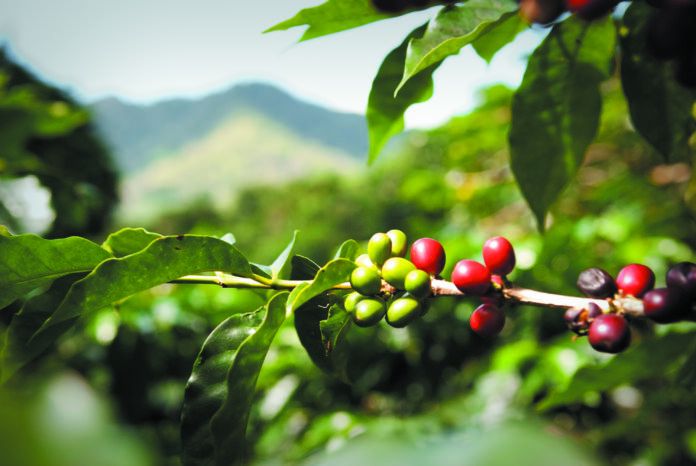Climate Change Impacting Coffee . . . Diet and Gout
Q: I was interested to learn about the negative environmental impact of food waste (February 2023). Conversely, can you provide an example of how environmental changes are impacting my food supply right now?
A: Sean B. Cash, PhD, an economist and the Bergstrom Foundation Professor in Global Nutrition at the Friedman School, answers: “An excellent example of how climate change is already having a real impact on our typical food intake is coffee. Coffee is a big part of daily life for many of us. It is also a massive industry that has grown dramatically in the last few decades. Climate change is already negatively affecting not only yield (how much is grown and harvested), but also price, taste, and, potentially, the bioactive compounds in the beans. (See page 1 to learn how the bioactive compounds in coffee are responsible for its health effects.)
“For example, coffee plants are very susceptible to a fungal blight called coffee rust. This fungus only thrives in a narrow temperature range, so coffee must be grown where the temperature is outside of this range. As the temperatures rise, one way farmers try to avoid coffee rust is to move crops higher and higher up into the mountains to find cooler areas. The higher you go, the less land there is to grow on. It also becomes harder and more expensive to build roads and more difficult to harvest the beans.
“The changing availability of water also impacts both yield and quality. Less water, or concentrated periods of water interspersed with dry periods, stresses the plants. Stress causes chemical changes in the plant, which changes taste, along with micronutrient and phytochemical profiles.
“All of this also impacts the lives of the people who grow coffee. It has gotten harder for farmers to manage the ups and downs of production caused by the shifting climate. The expense of changing their operations, plus the lower price offered for lower quality beans, is creating financial pressure that is pushing many growers out of business. If the life of a coffee grower in Guatemala seems far removed from our lives here, consider this: Political unrest in the U.S. around immigration has been high in recent years. The single largest source of migrants at the U.S. southern border in 2019 was Guatemala. A major driver of this out-migration was failure of coffee crops that year. Climatic conditions were bad, yields were down, prices were down, and growers were forced out of their farms.
“As the story of coffee illustrates, the economic impacts of climate change are happening now, and they have geopolitical ramifications. They also threaten to increase the price and decrease the availability, taste, and nutritional quality of one of our favorite beverages.”

To prevent gout flares, avoid or limit purine-rich foods and foods or beverages that raise uric acid levels.
Q: What dietary changes can I make to help me with my gout?
A: Steven Vlad, MD, PhD, a rheumatologist at Tufts Medical Center, answers: “Gout is a common form of inflammatory arthritis linked to high levels of uric acid in the body. Uric acid is made in the body from the breakdown of purines—compounds that occur naturally and are also found in some foods and beverages. If blood levels of uric acid are too high, the kidneys can’t excrete it fast enough and the blood uric acid concentration rises (a condition called hyperuricemia).
“A lot of risk is hereditary, as gout very much runs in families. In people who are predisposed to gout, hyperuricemia can lead to the formation of sharp-edged uric acid crystals that get lodged in the joints (particularly the lower body joints like toes, ankles, and knees) and cause painful gout attacks, or flare-ups. Not everyone with hyperuricemia will get gout, but once it develops it’s likely to return without treatment to lower uric acid levels.
“Managing uric acid levels can help prevent gout attacks and slow joint damage. When attacks occur infrequently (once a year or less), we generally start by recommending dietary changes. (For people who suffer more frequent attacks—two to three times a year—uric acid-lowering medications should be used.) Research shows that weight reduction in individuals with overweight and obesity can reduce uric acid levels and risk of gout flares.
“Dietary changes include avoiding or limiting purine-rich foods such as red meats and liver, and skipping added sugars and alcohol, which raise uric acid levels. Tips for doing this include replacing red meat with poultry and plant proteins like beans and nuts; swapping alcohol and sugar-sweetened beverages for unsweetened options, coffee, or water; and avoiding sugary treats in favor of vegetables, fruit, and nuts.”
























